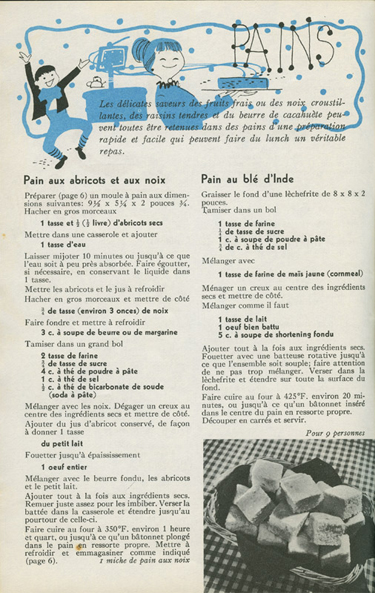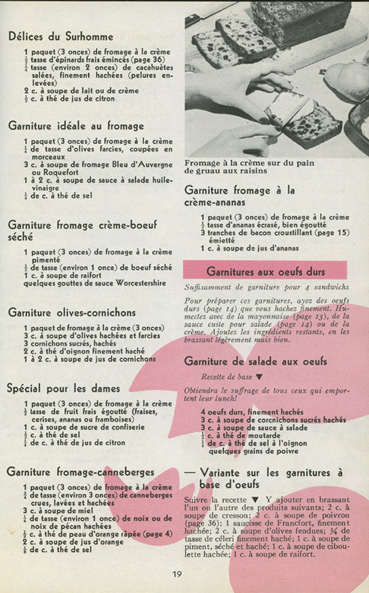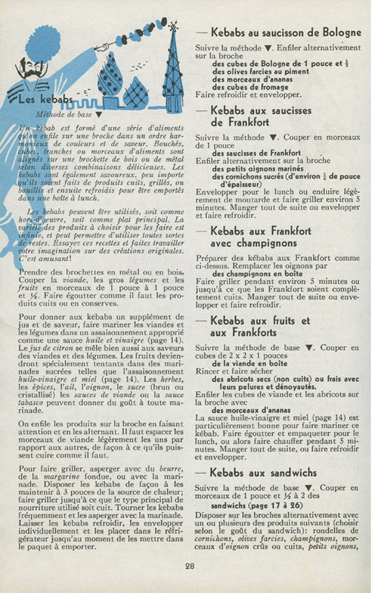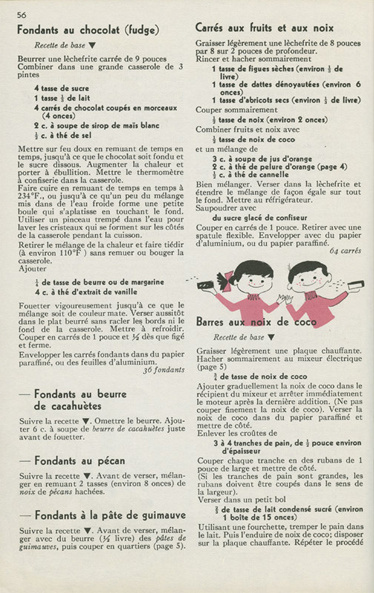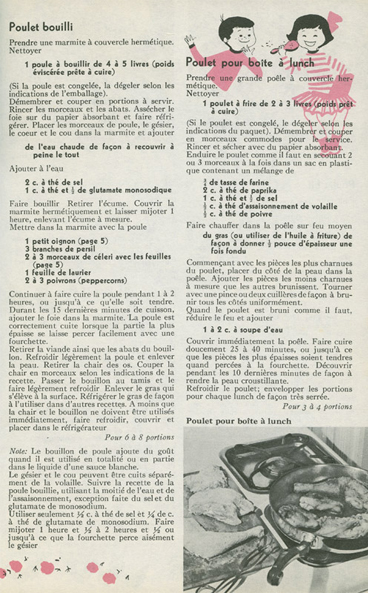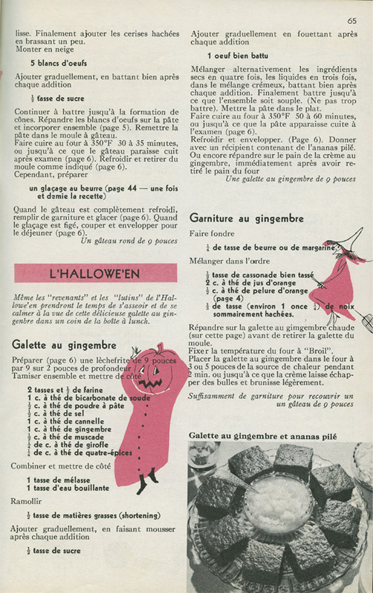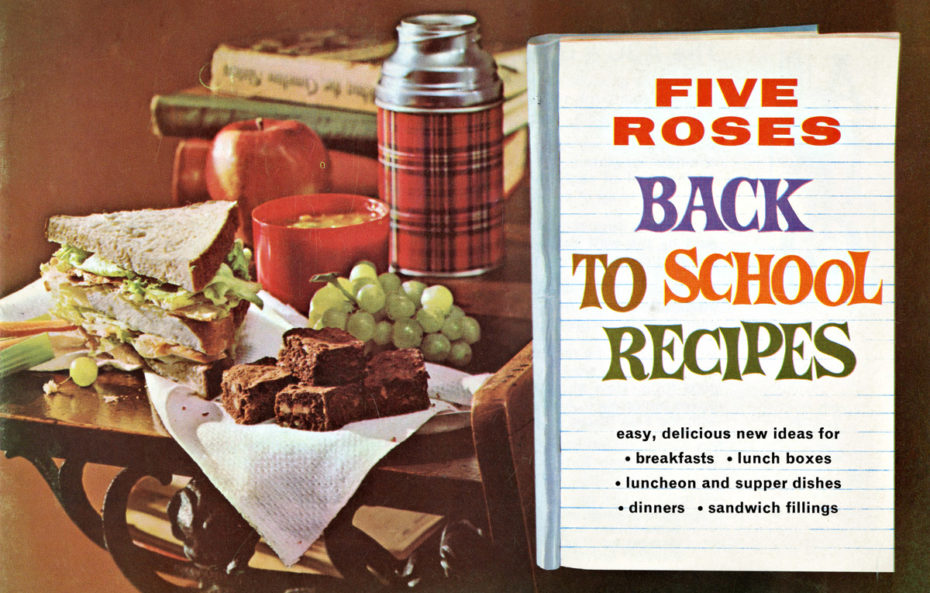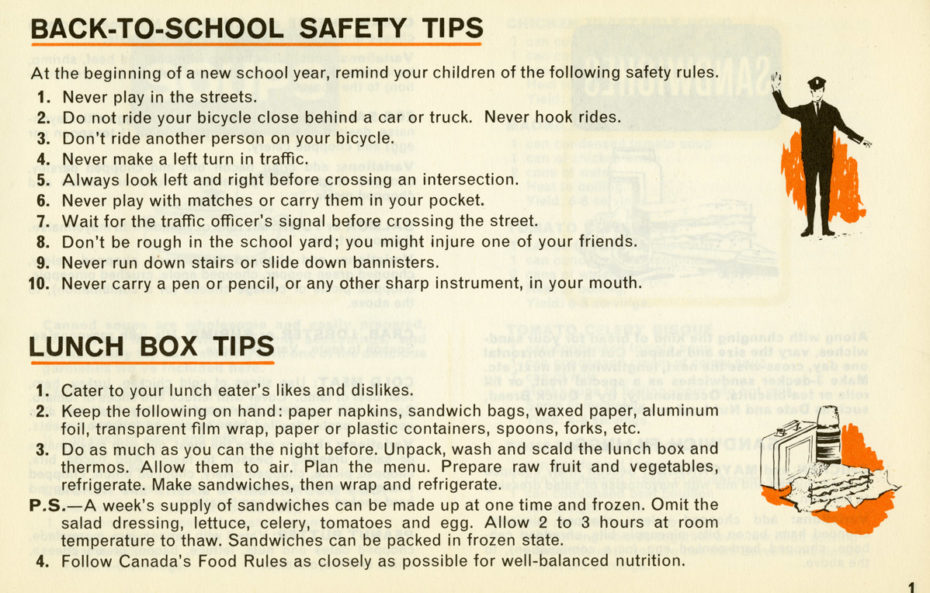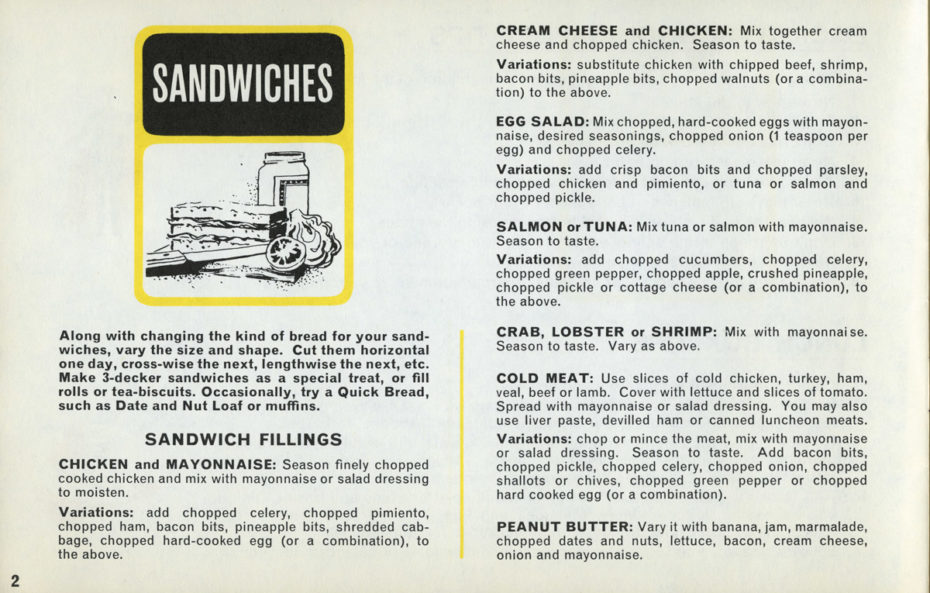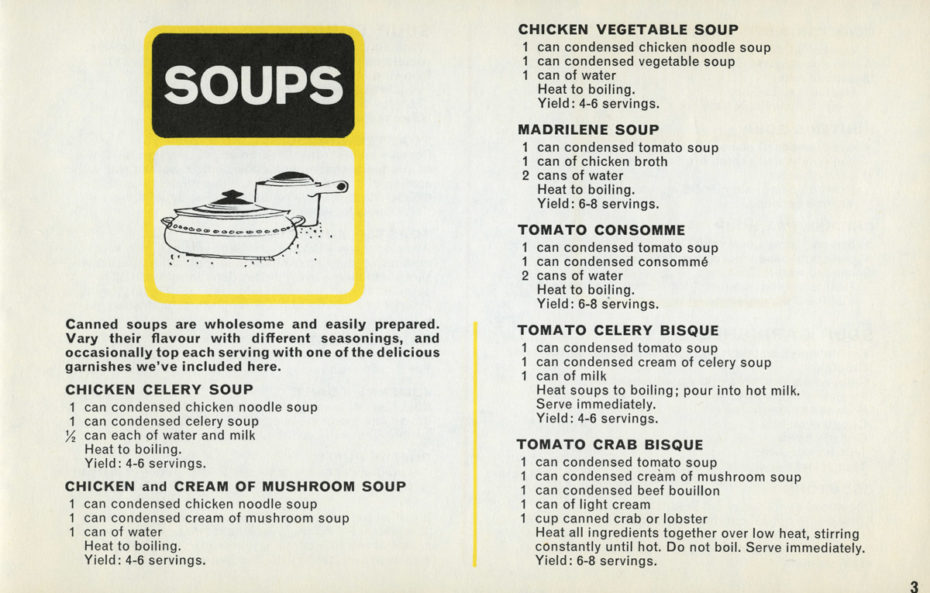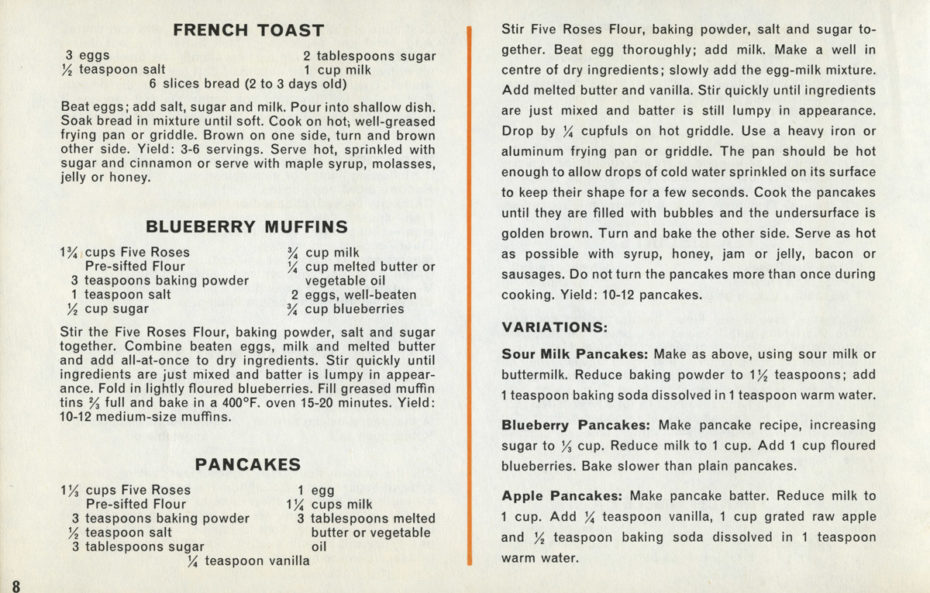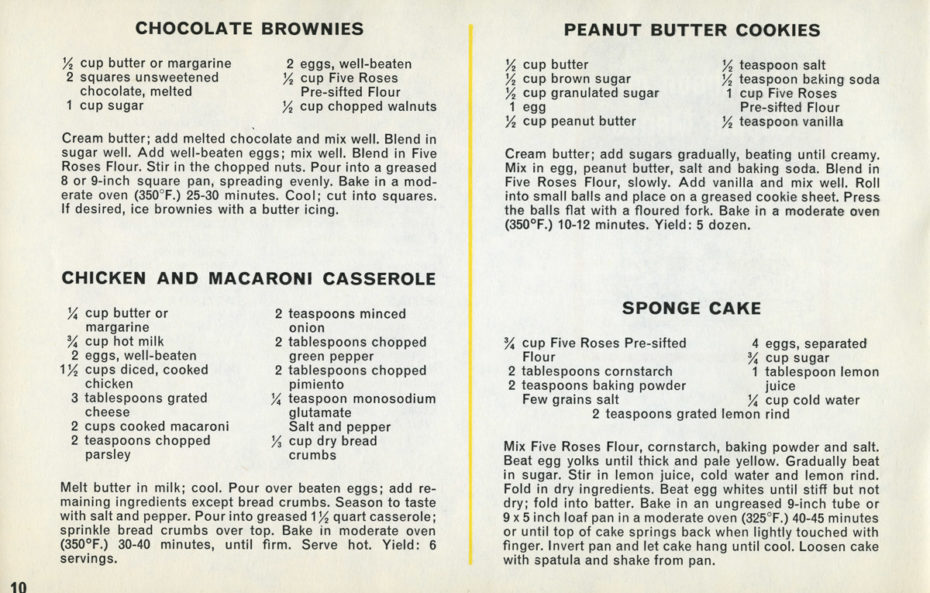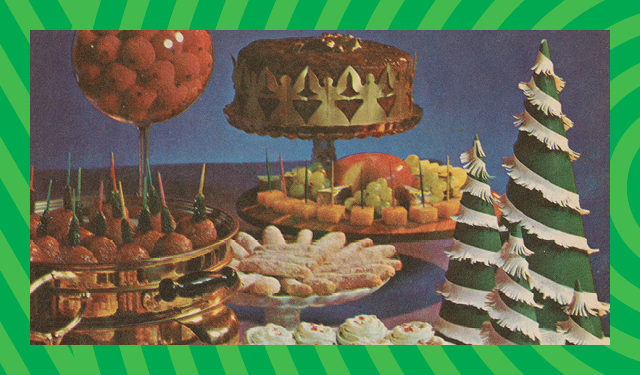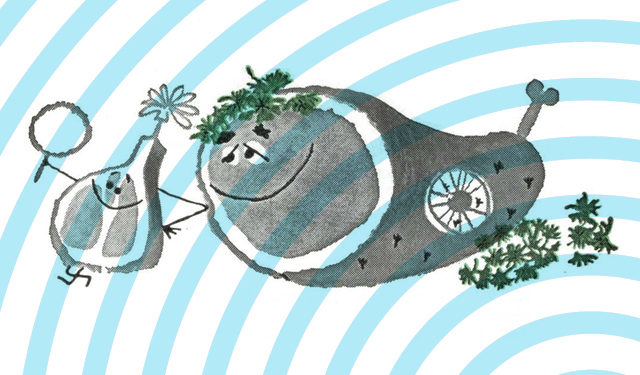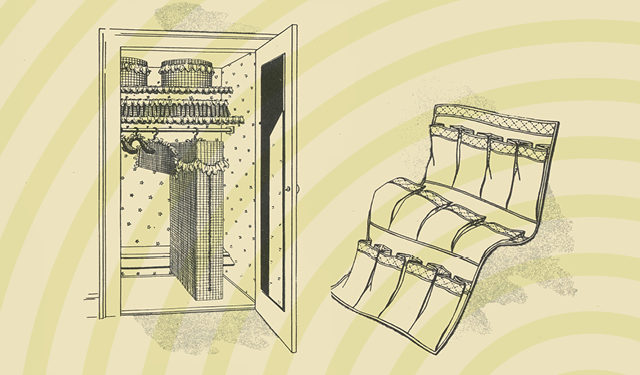Lunch Box ideas… from the 18th Century to the 21st!
Explore the McCord Museum's Recipes and Food Collection for some time-honoured tips on preparing lunch!
September 11, 2017
For many people, the month of September means back to school and back to making lunches. Are you always looking for new recipes or do you simply need some inspiration to jazz up the noon meal? For original alternatives to eternal leftovers, consult the McCord Museum’s Textual Archives collection containing nearly 1,000 cookbooks and recipe booklets produced between 1749 and 2000.
Together, these documents paint a portrait of Canadian domestic life by addressing themes like nutrition, the role of women in the family home, the economy and etiquette. The focus is on meal preparation and weekday lunches, revealing the long history of this daily task.
For example, the Blue Ribbon and Pure Gold cookbook highlights the importance of planning school lunches and notes that “while it is puzzling at times to know what to include that will be appealing, it is a big opportunity for the mother to use her ingenuity” (Pure Gold Manufacturing Company, 1948, p. 141). Several of the booklets were published by governments and various producer associations with the aim of encouraging the consumption of products from recommended food groups like beef, poultry, fish, dairy products, fruits and vegetables. The Farine Purity cookbook echoes this sentiment, underscoring the need for a varied and nutritious diet by advising both children and adults to consume fish liver oil, especially during the winter months (Purity Flour Mills Limited, 1945, p. 7).
As for the booklets created by private companies, they revisit classics like sandwiches, salads and cold buffet meals by showcasing foods like Campbell soup, Weston bread, Rice Krispies cereal and Catelli pasta. Among the numerous recipes found in these cookbooks and recipe booklets are a number of highly creative suggestions such as lemon soup, tomato aspic salad, liver and mushroom sandwiches, mincemeat bread brown, cottage cheese and relish, peanut butter and olives, garlic popcorn, and baked beans cooked with pop.
There are numerous ideas and products for simplifying the work of parents along with tricks for making box lunches both interesting and appealing. For example, the booklet entitled Comment congeler les aliments pour bien manger tout en réalisant des économies advises parents to take advantage of free afternoons to make large quantities of sandwiches and treats and then freeze them for later use (Hydro-Québec, s.d., p. 3). The Reynolds Wrap brochure recommends using a piece of aluminium foil to keep lunch boxes clean (Reynolds Aluminium Company, 1959, p. 3), while the Velvet Blend booklet suggests adding a cartoon or joke to your child’s box lunch, along with some pieces of velvet-smooth Carnation Fudge for sharing (Carnation Company, s.d., p. 5).
Whether you wish to expand your repertoire, stimulate your creativity or satisfy your curiosity, you will find over 6,500 new images from the special Recipes and Food Collection (C265) in the McCord Museum’s online database. It is hoped that promoting the dissemination of these archives will help preserve and promote Canada’s culinary heritage. Have a great school year and Bon appétit!


